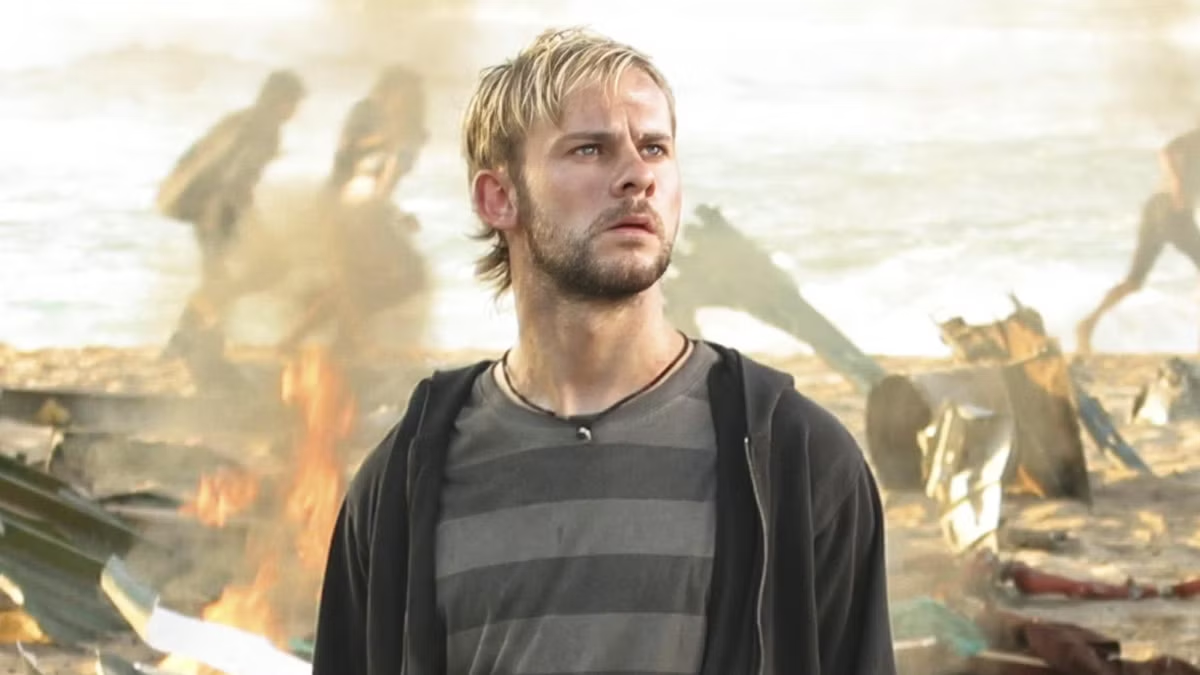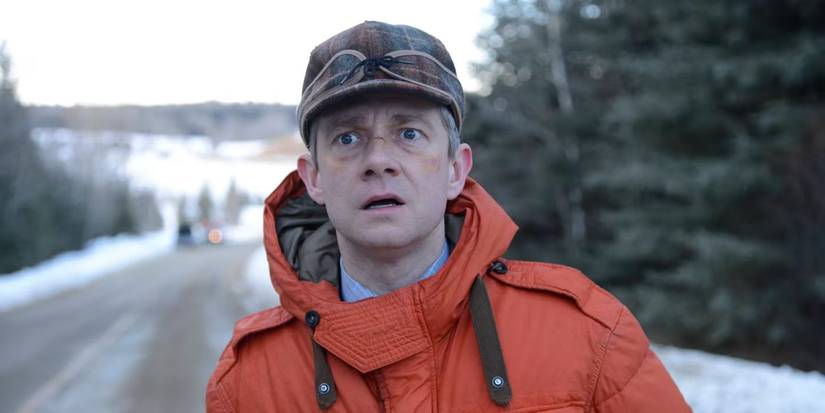Entertainment
10/10 Pilots Are Rare, but These 10 Shows Had Perfect Beginnings

A truly great pilot episode is a kind of magic trick. In under an hour, it has to introduce a world, sketch compelling characters, hint at long-term stakes, and still deliver a self-contained story that leaves viewers wanting more. When it works, a pilot becomes more than just the first chapter. Rather, it becomes a mission statement and a promise of what a show can be at its very best. The greatest pilot episodes of all time make the case to viewers that the show is worth investing in.
Across decades of television, certain pilots have distinguished themselves as cultural landmarks. These episodes didn’t just launch successful series; they reshaped genres, influenced how TV is written, and set new standards for storytelling. They’re the rare premieres that feel fully formed, as if the creators somehow knew from day one exactly what they were building. Perfect pilot episodes break rules or perfect them and have set the tone for the series that followed.
10
‘Fargo’ (2014-2024)
The pilot episode of Fargo introduces insurance salesman Lester Nygaard (Martin Freeman), a meek man trapped in a miserable life and bullied relentlessly. After a chance encounter with an enigmatic drifter, Lorne Malvo (Billy Bob Thornton), Lester is subtly encouraged to stand up to his tormentors. This advice spirals into violence when Malvo murders Lester’s bully without being asked. As Lester’s life unravels, he commits a shocking act of his own, drawing the suspicion of police officer Molly Solverson (Allison Tolman).
Fargo‘s first episode is perfect because it presents characters who are already fully developed. Malvo’s calmly chaotic philosophy and Lester’s tragic desperation immediately draw viewers in, setting up one of TV’s most compelling manipulator–victim dynamics. The pilot nails the mix of dark humor, creeping dread, and Midwest politeness that defines Fargo. By the final minutes, the viewer understands the rules of this world and feels the weight of every consequence.
9
‘The West Wing’ (1999-2006)
In the pilot episode of The West Wing, the senior staff scramble to manage multiple political crises in a single chaotic day at the White House. Deputy Chief of Staff Josh Lyman (Bradley Whitford) faces backlash after publicly insulting a conservative Christian leader, while Communications Director Toby Ziegler (Richard Schiff) learns that Cuban refugees are attempting a dangerous journey to the U.S. President Bartlet (Martin Sheen), absent for much of the episode, is dramatically introduced after a cycling accident.
The West Wing‘s pilot episode is so memorable because it effectively establishes the tone that the series would be no for immediately. This first episode establishes the show’s belief that smart, flawed, passionate people can try to do good. Within an hour, viewers get a sense of these characters’ personalities, ethics, strengths, and flaws. The episode balances policy crises, media blowups, and ideological tension with small moments of humor and vulnerability. This combination makes The West Wing feel both larger than life and grounded at the same time.
8
‘The Americans’ (2013-2018)
The pilot episode of The Americans introduces Elizabeth (Keri Russell) and Philip Jennings (Matthew Rhys), who appear to be a typical suburban couple in 1981 Washington, D.C., but are secretly deep-cover KGB operatives. After a mission to capture a defecting Soviet agent goes awry, they must hide him in their garage while managing the pressures of their cover lives and their unknowing children. An FBI agent who specializes in counterintelligence moves in across the street, which puts them in an even more dangerous position.
The pilot of The Americans is unforgettable because it immediately sets up a relationship drama as compelling as the spy plot. It stands out because it puts the Cold War in historical context by setting up a story that feels all too real. Introducing such well-developed characters who are compelling right from the start makes the series’ premise feel grounded and intimate instead of gimmicky. The pilot instantly proves that The Americans is a sophisticated, character-driven thriller with the emotional depth of prestige drama.
7
‘Breaking Bad’ (2008-2013)
Breaking Bad‘s pilot episode introduces high school chemistry teacher Walter White (Bryan Cranston), who learns he has terminal lung cancer. He’s desperate to secure his family’s financial future, and turns to manufacturing methamphetamine. After reconnecting with former student and small-time dealer Jesse Pinkman (Aaron Paul), Walt uses his scientific expertise to cook an exceptionally pure product in a makeshift RV lab. Their first attempt ends in chaos when Jesse’s associates threaten them.
The pilot episode of Breaking Bad is gripping and unforgettable, even for those who choose never to watch the rest of the show. Within this first hour, viewers understand exactly what the series will explore and what the tone will be. The set-up of a terminally ill, underpaid teacher deciding to use his chemistry genius to cook meth to support his family is as shocking as it is understandable. The motivation is simple, human, and morally ambiguous at best. Altogether, this pilot episode succeeds in being a compelling standalone story and a hook to invest in the series.
6
‘Mr. Robot’ (2015-2019)
Mr. Robot‘s pilot episode introduces Elliot Alderson (Rami Malek), a brilliant but socially isolated cybersecurity engineer with anxiety and depression, secretly hacks people at night to expose wrongdoers. After thwarting a major DDoS attack on his firm, he’s approached by a mysterious anarchist known as Mr. Robot, who recruits him to join “fsociety,” a hacker collective planning to take down the massive conglomerate E Corp, the same company Elliot’s firm protects.
From Mr. Robot‘s first episode, the series announces its interest in capitalism, alienation, mental health, and digital-age control which it makes it one of the best of all time. Elliot’s loneliness, trauma, and desire to do good feel raw and human, anchoring the plot’s grander conspiracies in believable personal conflict. He’s immediately easy to invest in as a protagonist. The introduction of Mr. Robot and fsociety gives the episode a sense of mystery and intrigue which is a tone that characterized the series going forward.
5
‘Mad Men’ (2007-2015)
In the pilot episode of Mad Men, set in 1960, advertising executive Don Draper (Jon Hamm) struggles to devise a campaign to save Lucky Strike amid growing health concerns about smoking. As he navigates the pressure, we see his world of glamorous yet cutthroat Madison Avenue culture, complete with sexism, office politics, and heavy drinking. Don mentors his nervous new secretary, Peggy Olson (Elisabeth Moss), who encounters the firm’s pervasive misogyny on her first day.
Mad Men‘s pilot is another example of a series premiere that’s so notable because drops viewers into a fully-realized world with already developed characters. The fashion, dialogue, workplace dynamics, and social norms are presented without exposition, trusting viewers to absorb the period through behavior rather than explanation. Don Draper arrives as charismatic, brilliant, and seemingly in control until the final twist reveals the deeply fractured double life beneath. That last scene instantly reframes everything and sets up one of TV’s richest character studies.
4
‘Lost’ (2004-2010)
In the two-part pilot of Lost, a plane crash leaves dozens of survivors stranded on a mysterious, seemingly uninhabited island. Led by calm, resourceful doctor Jack Shephard (Matthew Fox), the group struggles to tend to the wounded, locate supplies, and make sense of their situation. As they explore, strange and unsettling events occur, including terrifying roars from the jungle and the discovery that the island may harbor unknown dangers.
The Lost pilot is considered one of the greatest TV pilots ever made because it delivers spectacle, mystery, character depth, and world-building on a scale television had rarely seen at the time. The first minutes, with Jack waking in the jungle, the chaos on the beach, the wreckage still exploding, remain some of TV’s most stunning visuals. The pilot establishes the show’s unique tone, which is part adventure story, part mystery box, part character drama, without leaning too heavily on any one element.
3
‘Game of Thrones’ (2011-2019)
The Game of Thrones pilot, “Winter Is Coming,” introduces the Stark family of Winterfell as they receive a visit from King Robert Baratheon (Mark Addy), who asks Ned Stark (Sean Bean) to become his new Hand after the mysterious death of the previous one. The episode establishes rising political tensions in the Seven Kingdoms, hints at courtly intrigue through the Lannisters’ hidden agendas, and reveals the threat of supernatural forces beyond the Wall.
The Game of Thrones pilot is one of the best TV pilots of all time because it successfully introduces a sprawling fantasy world, a huge ensemble cast, and multiple plotlines. The episode introduces Westeros, the North, the Wall, and Essos, all with distinct cultures, moods, and stakes, without overwhelming viewers. The closing moment of the pilot sees Jaime (Nikolaj Coster-Waldau) push Bran (Isaac Hempstead Wright) from the tower, which is a shocking twist that conveys the show’s moral ruthlessness and willingness to subvert expectations.
2
‘The Walking Dead’ (2010-2022)
The pilot episode of The Walking Dead introduces sheriff’s deputy Rick Grimes (Andrew Lincoln), who awakens from a coma in an abandoned hospital to discover that society has collapsed following a zombie outbreak. Confused and alone, he journeys through the devastated outskirts of Atlanta, slowly realizing the scale of the apocalypse as he encounters destroyed towns, deserted highways, and horrifying walkers. After narrowly escaping several attacks, Rick is rescued by a man named Morgan (Lennie James) and his son.
The Walking Dead‘s premiere episode is so perfect because establishes the blend of horror, drama, and human storytelling that always defined the series. Instead of relying on nonstop action, the pilot focuses on Rick’s confusion, grief, and determination. His loneliness anchors the entire episode and grounds the apocalypse in human emotion. The episode also succeeds in using silence and emptiness, including abandoned rooms, empty streets, overturned cars, to build dread, which is an effective way to pull viewers into this universe.
1
‘Miami Vice’ (1984-1990)
In the Miami Vice pilot, “Brother’s Keeper,” undercover detective Sonny Crockett (Don Johnson) is reeling from the death of his partner during a botched operation against an elusive drug trafficker named Calderone (Miguel Pinero). As Crockett pursues the case, he’s forced to team up with New York cop Ricardo Tubbs (Philip Michael Thomas), who has come to Miami seeking revenge for his own brother’s murder, also tied to Calderone. Though initially distrustful of each other, the two men uncover that they’ve been chasing the same criminal and reluctantly join forces.
“Brother’s Keeper” is such a notable pilot episode because it blends a melancholic tone with 1980s flash. Crockett is wounded by the loss of his partner and Tubbs is driven by grief and revenge. Their emotional arcs are woven into the action in a way that made the pilot feel deeper than a typical procedural. Instead of tying up the case neatly, the pilot ends with the villain getting away. This signaled that Miami Vice was never going to be a case-of-the-week show. Instead, it set the stage long-term arcs and emotional fallout.



















